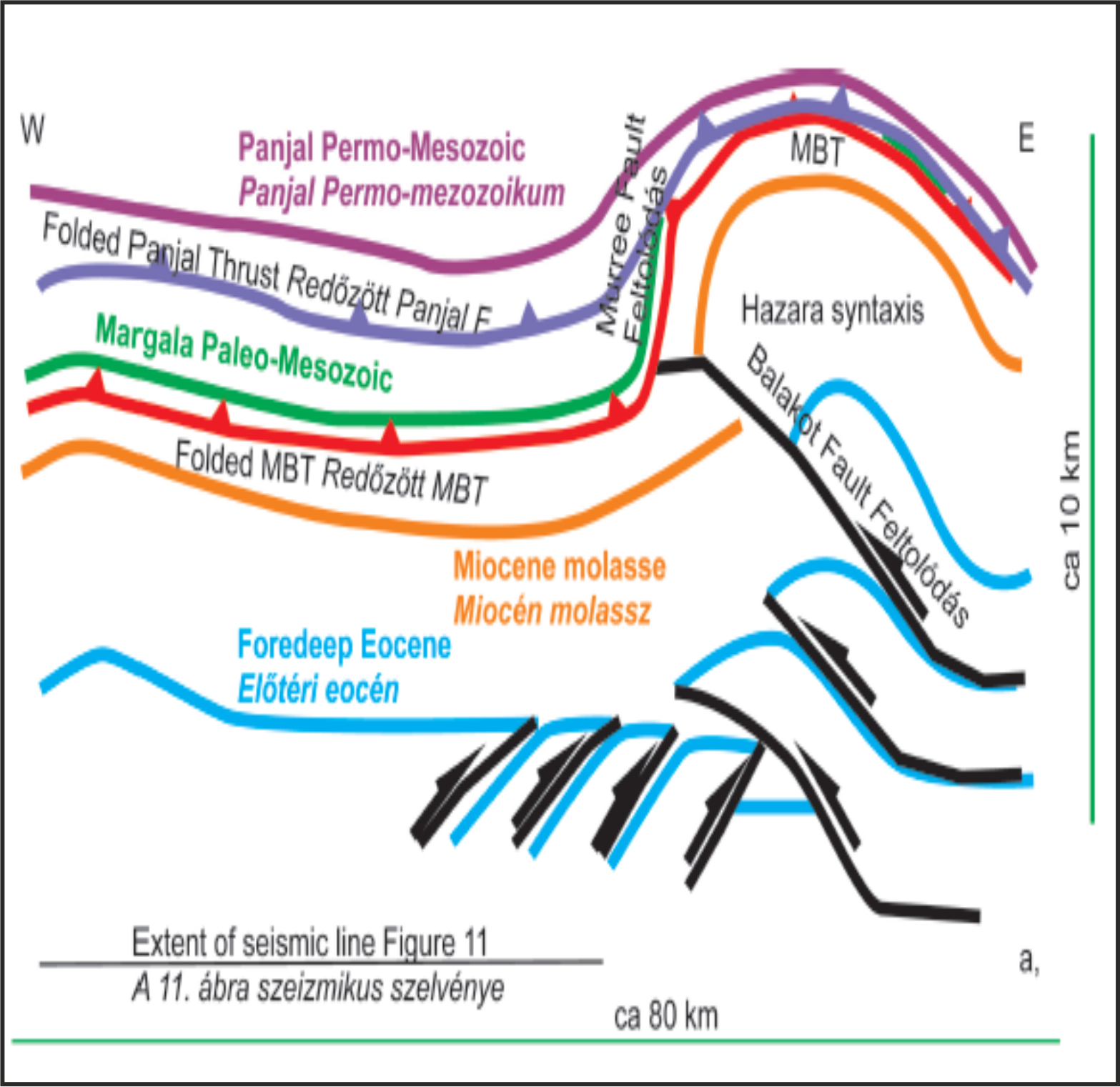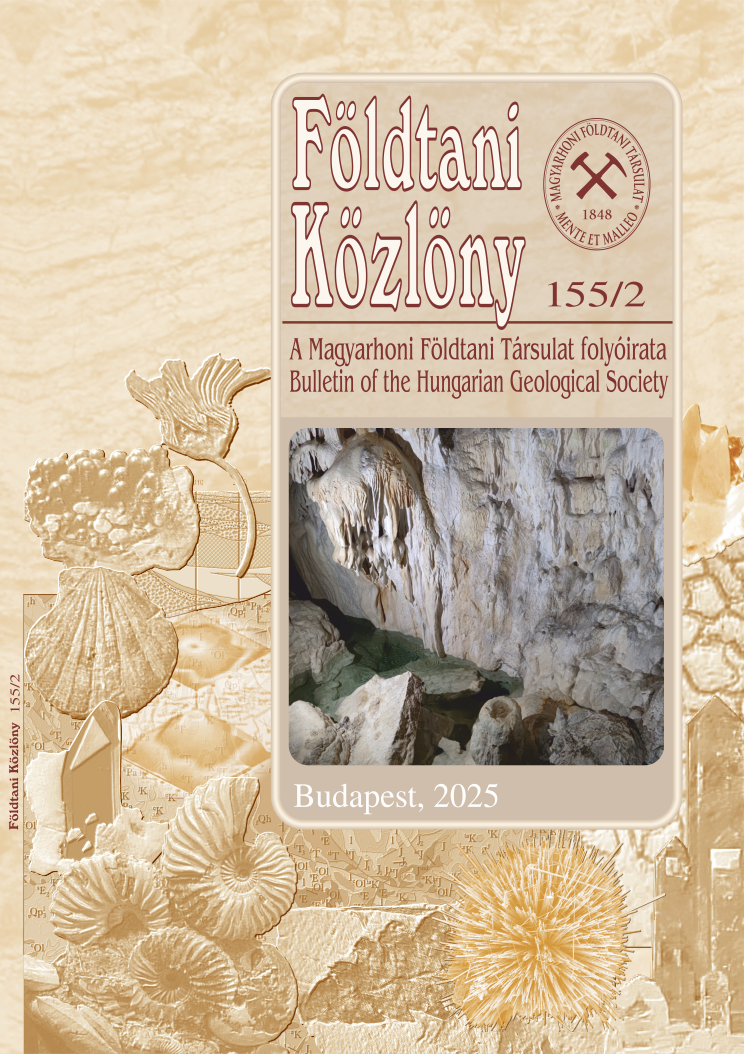Transversal folding in Himalaya foothill ranges
In memory of Frank Horváth
Abstract
The Himalayan foreland in N Pakistan, dissected by Main Frontal Thrust (MFT) and Main Boundary Thrust (MBT) contains spectacular salients and syntaxes. The lateral (N-S) boundaries between these salients and syntaxes around Kalabagh city and east-southeast of Islamabad were believed to host deep-seated lateral ramps with strike slip movements. However, seismic data in these two sectors suggest that there are N-S trending folds and locally east- or west-vergent thrusts that affect the Paleozoic-Paleogene cover of the Indian shield, as well as the Miocene-Pliocene molasse sediments. The proposed lateral ramps cannot be followed on the seismic and on maps either; instead, both maps and seismic data suggest folding, often on a regional scale of harder Paleo-Mesozoic-Paleogene and softer Oligo-Miocene-Pilo-Pleistocene cover.
The NE corner of Surghar range is proposed to be formed of relaying thrust sheets with emergent heads composed of Paleozoic-Paleogene and its slightly detached Miocene molasse. These relaying imbricates are taken in a southward flexure generated by a major right lateral shear of a wide zone, where transpressive Riedel shears, en echelon anticlines and southwards flexed earlier thrust faults are the main elements (but a single, through-going Kalabagh fault is missing). The generation of mapped N-S trending folds and east-vergent thrusts preceded the formation of the wide shear zone and southwards flexing.
Hazara syntaxis is interpreted as a major antiform that re-folded MBT and Panjal thrust around Oligo-Miocene molasse, itself forming an antiform (BOSSART ET AL. 1988). In our model we propose that the west-vergent Balakot thrust and deeper blind thrusts are in the core of this antiform. In the southern continuation we propose that folds in Miocene molasse continue from eastern Potwar region to western Kashmir and there appears no major break. These structures are also re-folded in a major antiform with N-S axial trend. Map analysis also suggests that N-S trending folds bending earlier main thrusts are occurring in a wide area south of the Indus-Tsangpo suture.
Several independent geological and geophysical observations including mapping, seismic analysis, earlier measurements of strain axes and of paleomagnetic declinations suggest that the salients and syntaxes may have been much more linear in the past (although a total linearity is not realistic). It is proposed that the present-day undulating pattern may have been generated by N-S trending folds due to general (and episodic) E-W shortening. If the main fault zones were more linear, the relay pattern along their segments suggests a left lateral shear component along MBT and a mixed, locally left, locally right lateral component along MFT.
Earlier (ZEITLER 1985) and now provided low temperature thermochronological ages strongly suggest a rather general episode of E-W shortening between 4-5 Ma for the whole northern Indian margin. However, there should have been original transversal dome formation as early as Oligocene (DIPIETRO ET AL. 2008). It is also clear that longer N-S shortening and shorter E-W shortening episodes should alternate eventually in a very short time frame, since earthquake focal mechanisms (LISA AND KHWAJA 2004, BURG ET AL. 2005) suggest the coexistence of E-W compression and NW-SE compression in Potwar.
There are several potential explanations for generating E-W shortening and related structures in a general N-S shortening regime. Possibilities range from fault terminations of thrust faults at high angles in a particular zone (TREOLAR ET AL. 1992) to en echelon folding along a major right lateral E-W fault zone. However, we speculate that E-W shortening could be much more general, suggesting a mechanism that affects the whole of Indian plate. Possibly the best explanation is given by analogue models (REPLUMAZ ET AL. 2012) proposing major, slightly convergent confining boundaries. If applied to the northwards advance of India, the northwards converging boundaries generate secondary E-W shortening and east-or west-vergent orogens parallel to these boundaries.
















